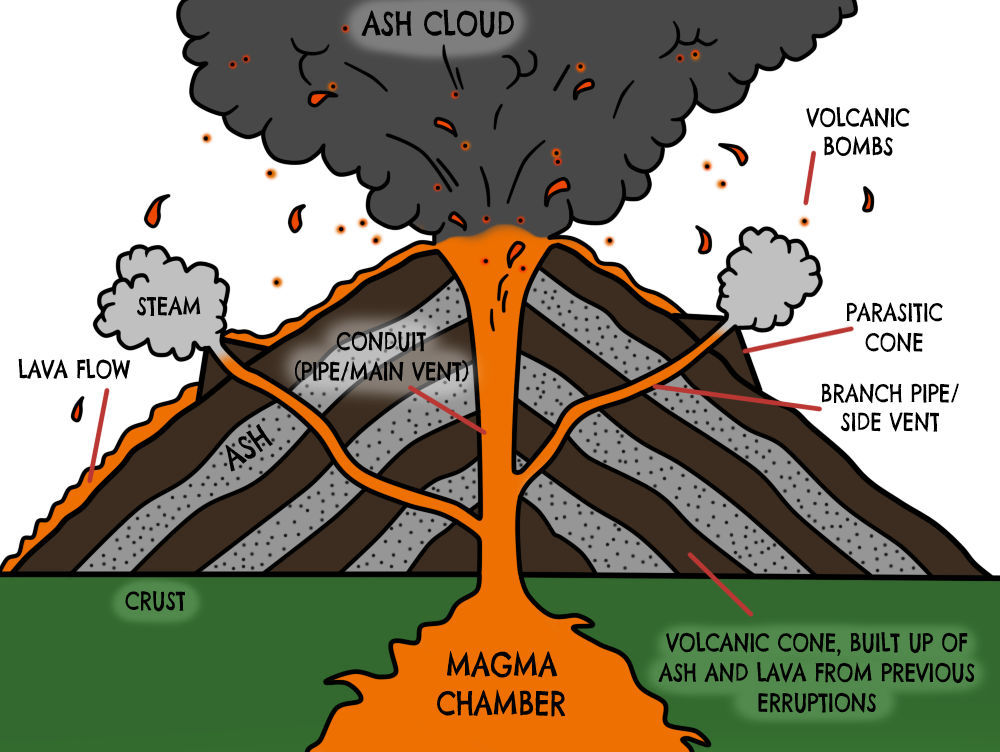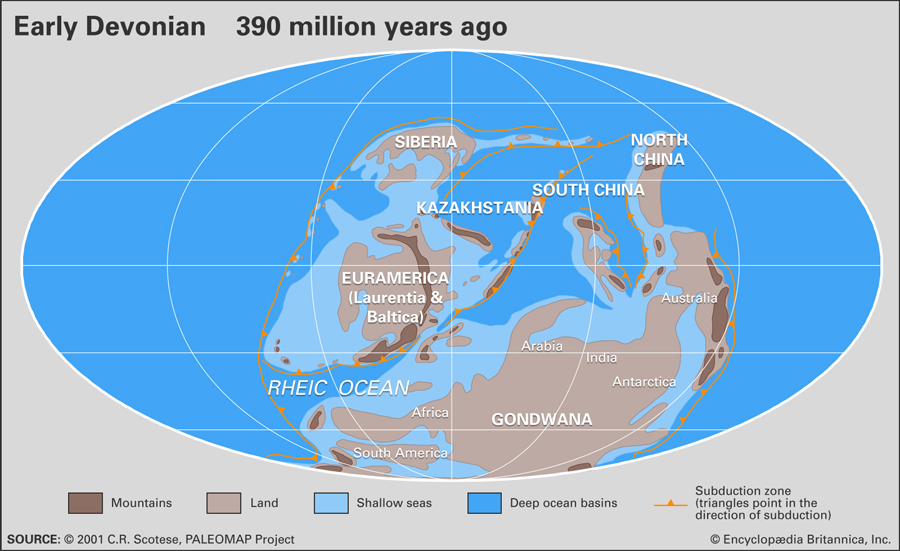To log this earthcache, please don’t stress about answering the questions. Simply send your best attempts in a private message to me, (the cache owner), and then go ahead and log it as found.
You don’t need to wait for my approval. All attempts will be accepted.
Go ahead and have fun learning! 
- [REQUIRED] Please post a photo in your log of yourself or a personal item at GZ to prove you visited the site.
- Looking at the outcrop, do you see visible crystal fragments? If so, describe them.
- What is the general appearance of the rest of the volcanic ash?

Cherry Mountain is part of a string of hills running northeast-southwest through Harvey – about 20 kilometres long in all. The hills are mostly made of felsic volcanic rock, however, the hills themselves were not volcanoes. The volcanic material here was produced by the explosive eruption of a volcano about 35 kilometres to the southeast during the Devonian Period.
Devonian Volcanic Rocks of the Maritimes Basin
The Devonian Period is a geologic period spanning 60.3 million years from the end of the Silurian, 419.2 million years ago (Mya), to the beginning of the Carboniferous, 358.9 Mya. The first significant adaptive radiation of life on dry land occurred during the Devonian. Free-sporing vascular plants began to spread across dry land, forming extensive forests which covered the continents. By the middle of the Devonian, several groups of plants had evolved leaves and true roots, and by the end of the period the first seed-bearing plants appeared. Various terrestrial arthropods also became well-established.

By the end of the Devonian period, this part of the earth’s crust near Harvey was being stressed and distorted by tectonic collisions far away to the south. Locally, heat flowing up from the mantle caused part of the lower crust to melt, forming sticky, silica-rich magma that rose toward the surface, eventually resulting in the catastrophic eruption. Along the trail you can see the rock formed by this dramatic event.
Ash flow is a term geologists use to describe an aerosol of magma that explodes from a volcano in a very hot (up to 100 degrees Celsius) dense cloud. This cloud of magma and volcanic gas roils and rushes over the landscape at 100 kilometres per hour or more. It deposits still-hot material, which then welds together under its own heat and weight.

A low, jagged outcrop of felsic crystal tuff is located immediately beside Harvey Lakeside Trail, near where the trail enters the lakeside woods. This outcrop offers several fresh surfaces on which you can see the rock texture quite well, and this is what we will use to answer the questions.
Types of Tuff
Tuff is a type of rock made of volcanic ash ejected from a vent during a volcanic eruption and turns into a solid rock. Rock that contains greater than 75% ash is considered tuff, while rock containing 25% to 75% ash is described as tuffaceous (for example, tuffaceous sandstone).
Fine Ash and Coarse Ash
Volcanic ash is further divided into fine ash, with particle sizes smaller than 0.0625 mm in diameter, and coarse ash, with particle sizes between 0.0625 mm and 2 mm in diameter. Tuff is correspondingly divided into coarse tuff (coarse ash tuff) and fine tuff (fine ash tuff or dust tuff).
Volcanic ash can vary greatly in composition, and so tuffs are further classified by the composition of the ash from which they formed.
Crystal Tuff and Lithic Tuff
Tuffs formed from ash consisting predominantly of individual crystals are described as crystal tuffs, while those formed from ash consisting predominantly of pulverized rock fragments are described as lithic tuffs.
The rocks of Cherry Mountain are unusual in some aspects of their chemistry. They contain more silica, potassium, fluorine, boron, and uranium than a typical granite or rhyolite would This pattern is typical of felsic melts formed very high in a magma chamber, where volatile elements are concentrated.
The volcanic rocks around Harvey, while unusual, are not completely alone. 35 kilometres to the south-southeast around Piskahegan and Mount Pleasant is another group of volcanic rocks of the same age. The rocks at the site indicate that a large volcano erupted catastrophically and collapsed, forming a caldera. Ash flows from that eruption were surely the source of the volcanic rocks at Harvey.

References:
- Hickman Hild, M., and Barr, S.M. 2020. Geology New Brunswick & Prince Edward Island: Touring through time at 44 scenic sites. Boulder Publications, NL, 265p.